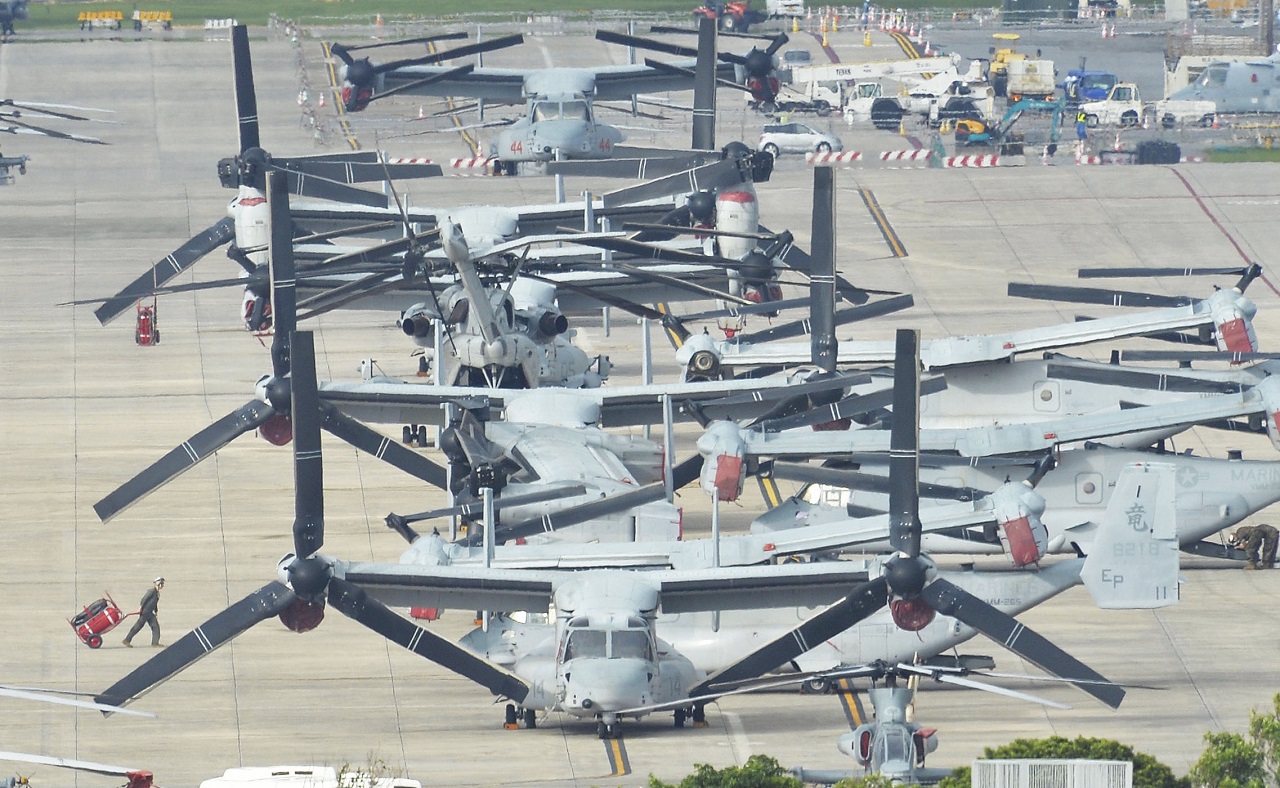
Marines from Air Control Group 38, part of the rotational force, will also take part in Pitch Black

Marines from Air Control Group 38, part of the rotational force, will also take part in Pitch Black

THE Aviation Combat Element of the 2018 Marine Rotational Force – Darwin has arrived in the Northern Territory as part of the seventh and largest rotation to date.
This year’s Aviation Combat Element comprises eight MV-22 Osprey tilt-rotor aircraft.
Deputy Commander Northern Command, Captain Bryan Parker, RAN, said the increase in Ospreys gave Australian and US forces the ability to conduct more complex and sophisticated training activities and exercises.
“During this year’s six month rotation, MRF-D and its Aviation Combat Element will develop an enhanced amphibious capability with the Australian Defence Force,” Captain Parker said.
The eight MV-22 Osprey tiltrotor aircraft are from Marine Medium Tiltrotor Squadron 268 (VMM-268), based at Marine Corps Air Station Kaneohe Bay in Hawaii.
The MV-22 Ospreys arrived at the Port of Darwin on a US cargo vessel.

After a shaky development history that included several deadly high-profile crashes, the Osprey became a symbol of the anti-base resistance on Okinawa in 2012 when it arrived on the island to replace the Marines’ aging fleet of Sea Knight helicopters. The aircraft has since been the focal point of near daily protests, and expelling it from the island was a major campaign promise of Gov. Takeshi Onaga’s during the 2014 election.

According to the US official, the Osprey crashed after clipping the back of the USS Green Bay while trying to land on the amphibious transport ship. The Okinawa-based aircraft which crashed was in Australia as part of a joint military exercise called Talisman Sabre, which has just ended in Queensland state.

GIANT birds of prey will hover the Territory’s skies as part of this year’s US Marines deployment in the Top End.
A number of Osprey tilt-rotor aircraft are heading to Darwin to quickly deploy the 1250 marines who will soon be calling the city home for the next six months.
The Osprey aircraft take off and land like helicopters but can fly like planes.
While the US Marine deployment will have the same number of personnel as the previous, the new rotation will have superior aircraft numbers supporting it.
As well as the Ospreys there will be five AH-1W Super Cobras and four UH-1Y Venoms.
The officer in charge of the forward co-ordination for Marine Rotational Force – Darwin, Lt. Colonel Matthew Emborsky, said the Osprey’s speed and distances it could operate in made it perfect for the Territory outback.
Last year the marines were supported by just four Huey helicopters.
The Ospreys will be based at Royal Australian Air Force Base Darwin and will become a regular feature in our skies.
“Bradshaw Field Training Area, where our marines drill, is an eight-hour drive from Darwin … the Osprey can get there in an hour,” Lt. Colonel Emborsky said.